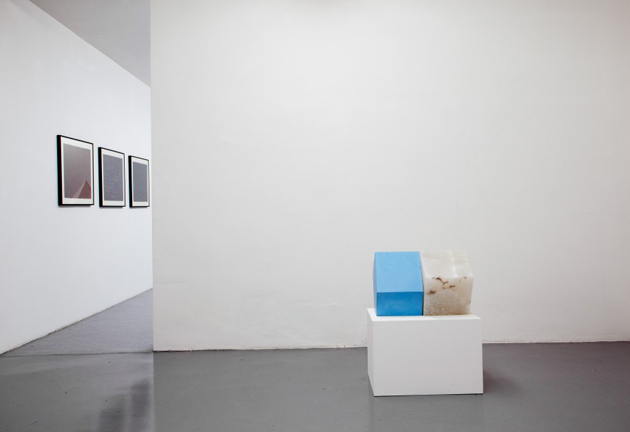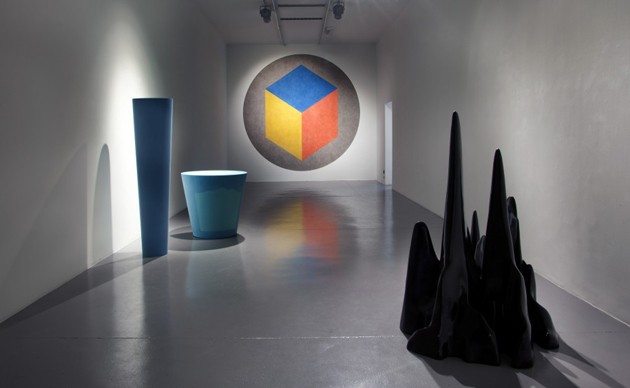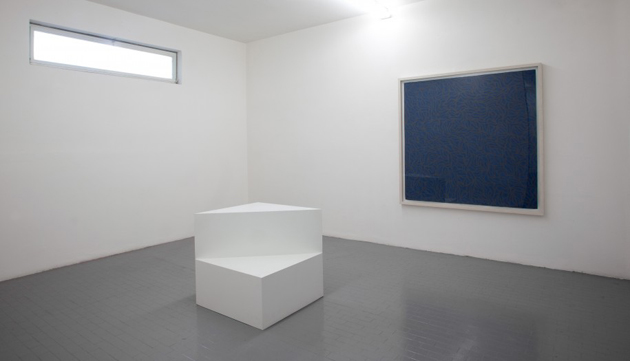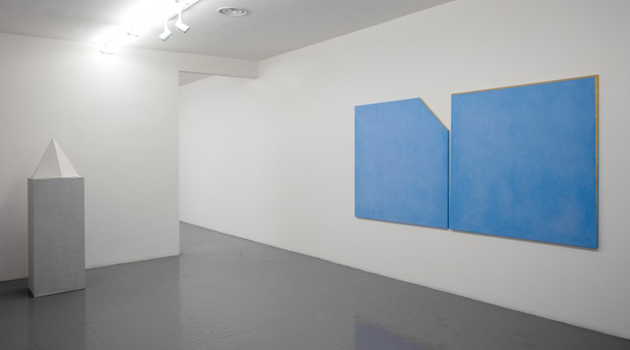Ettore Spalletti, Sol LeWitt
The works of artists Sol LeWitt (b.1928 Harford, Connecticut-2007 New York) and Ettore Spalletti (b. 1940, Cappelle sul Tavo) have never before been engaged in direct, exclusive dialogue at the Massimo Minini’s gallery in Brescia. At first sight, this juxtaposition of the two oeuvres certainly comes as a friendly reunion. LeWitt and Spalletti are among the most widely influential and most important artists of their generation. From the 70s their works have been included in numerous international collections and are exhibited in renowned museums and institutions.

LeWitt’s objects are marked by a reduction to simplest geometrical shapes and surfaces in neat colours. With his large sculptures and wall paitings he belongs to the group of artists who, in mid-60s America, started developing the basis of the american Minimal Art inspired by the aesthetics and culture of the early 60s. That was the era when he coined the term “Conceptual Art” in his pivotal essay “Paragraphs on Conceptual Art” published on Artforum, in June 1967. From that day on, the influence of this great master can be found in great many series of artistic expressions: from the younger generation of artists as well as in architects and designers who took inspiration from Lewitt’s work. The art displayed in this exhibition includes his “structures” and paintings in a close and intense dialogue with Spalletti’s works.

Since the mid-70s, Ettore Spalletti has created a language that is suspended between painting and sculpture, focusing on light and space, an approach which is reminiscent of both Minimal Art and the geometry of the purest tradition of the Italian history of art: from Giotto until the present day. His chromatic backgrounds cover essential forms which, through the apparent containment within their geometric outlines, become evocative due to the quality of the painting they are imbued with. The forms are drawn, then transferred to wood, paper or stone, and finally painted. The drawing is therefore simply the support for the work, which only comes into being when the paint materializes. The thickness of the paint is obtained by applying successive layers of mixtures of plaster and pigments, a slow process which takes account the varying times required for the paint to dry. The colour is only revealed in the final moment of this long process when abrasion causes the decomposition of the pigments, making the surfaces powdery, like velvety skin, with an infinite range of shades and slight variations.

In both artists there is no “painting” in the traditional sense of the term, but identification between paint and support, between colors and pure structure; there is no “sculpture” in the sense of shaping, because everything here seems to be a projection of one idea or concept more than a result of artists’ gestures or attempts. Both Spalletti’s and LeWitt’s works are painted in delicate and precise colours that cancel all signs of emotivity: the result is a visual ambient of purity and contemplation, oscillating from an open relation to a definitive structure, giving each surface a breadth that alludes to life and its figurativeness without figures.

The exhibition will run until the end of March 2013.
Riccardo Conti
